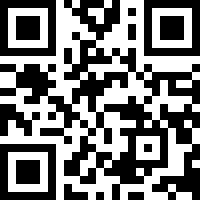Counterfeit goods are a major concern in many industries all year round, but during this holiday season, the increased demand for gifts, household products, virtual learning tools, and even health products means that fraudsters wanting to make a profit by selling knockoff goods to unsuspecting consumers are especially during the holiday season.
The global economy loses more than $500 billion a year due to counterfeit goods. To prevent being deceived, consumers should be cautious. Learn how to purchase wisely this Christmas season with these five tips:
1. Do some research about the seller.
When you visit an online store, the greatest method to prevent getting a counterfeit is to buy directly from the official store of a brand or firm. Purchasing from a third-party vendor or resellers on some online buying sites increase the possibility of being sold a fake. Many third-party vendors selling on internet marketplaces are, of course, legitimate, and some may even be approved stores. But, before you click buy, double-check who the seller is. Many online shopping platforms verify legitimate sellers especially if they have a lot of sold products and positive reviews.
2. Be vigilant about big discounts.
Check approved merchants for the item’s current retail price—they’re generally mentioned on the brand’s website. It’s possible that if a seller is selling a new or special product for less than the specified price, it is probably a fake. According to Julie Zerbo, founder of “The Fashion Law,” an online business and legal resource covering the fashion sector, even a modest reduction could be a red signal, because more counterfeiters are pricing nearly as much as the real thing in an attempt to deceive shoppers.
3. Read other feedback or reviews from customers.
Many people rely on Amazon user reviews to determine whether or not a product is trustworthy. However, regardless of who the merchant is, reviews on product sites are pooled. If you look closely, you might notice reviews for the same product that are dramatically varied, which could be due to quality control issues, durability concerns, or various customer experiences—or it could indicate a problem.
4. Inspect the product’s packaging.
Not only do brands put their logos on their products, but they also put them on their packaging. If your item comes in plain packaging, that could be a red indicator. If you do come across a brand logo, make sure it matches the one on the company’s website. Misspellings and design discrepancies could indicate that you’re dealing with a forgery. Certifications, use-by dates, and associated guarantees should all be included with the product. You can check the serial number on the manufacturer’s website in some situations.
5. Make anti-counterfeiting technology a priority.
Nowadays, counterfeiting can be nearly impossible to detect without the use of technology. As a result, firms that take use of technology can make it easier to spot and stop counterfeiters.
Some companies especially pharmaceuticals add nano-optic graphics to their goods or use unique patterns, holograms, QR codes, or packaging that can be detected with a specific gadget with AI-based application. You can verify your goods and detect fakes using a variety of high-tech techniques.
How IDLogiq Helps
Anticounterfeiting and Authentication for the Next Generation
With IDLogiq’s unique NFC security technology, counterfeit items can be detected before they reach the consumer. By integrating its technologies at the manufacturing level, products may be tracked at every stage of the supply chain. The product can be scanned and authenticated at any point along the supply chain to determine whether it is genuine or counterfeit, as well as whether it is in the correct supply channel. This allows organizations to catch counterfeit goods before they reach the end user, which is a very effective way to combat counterfeiters.
Visit IDlogiq to learn more about the most advanced anti-counterfeiting solutions.


